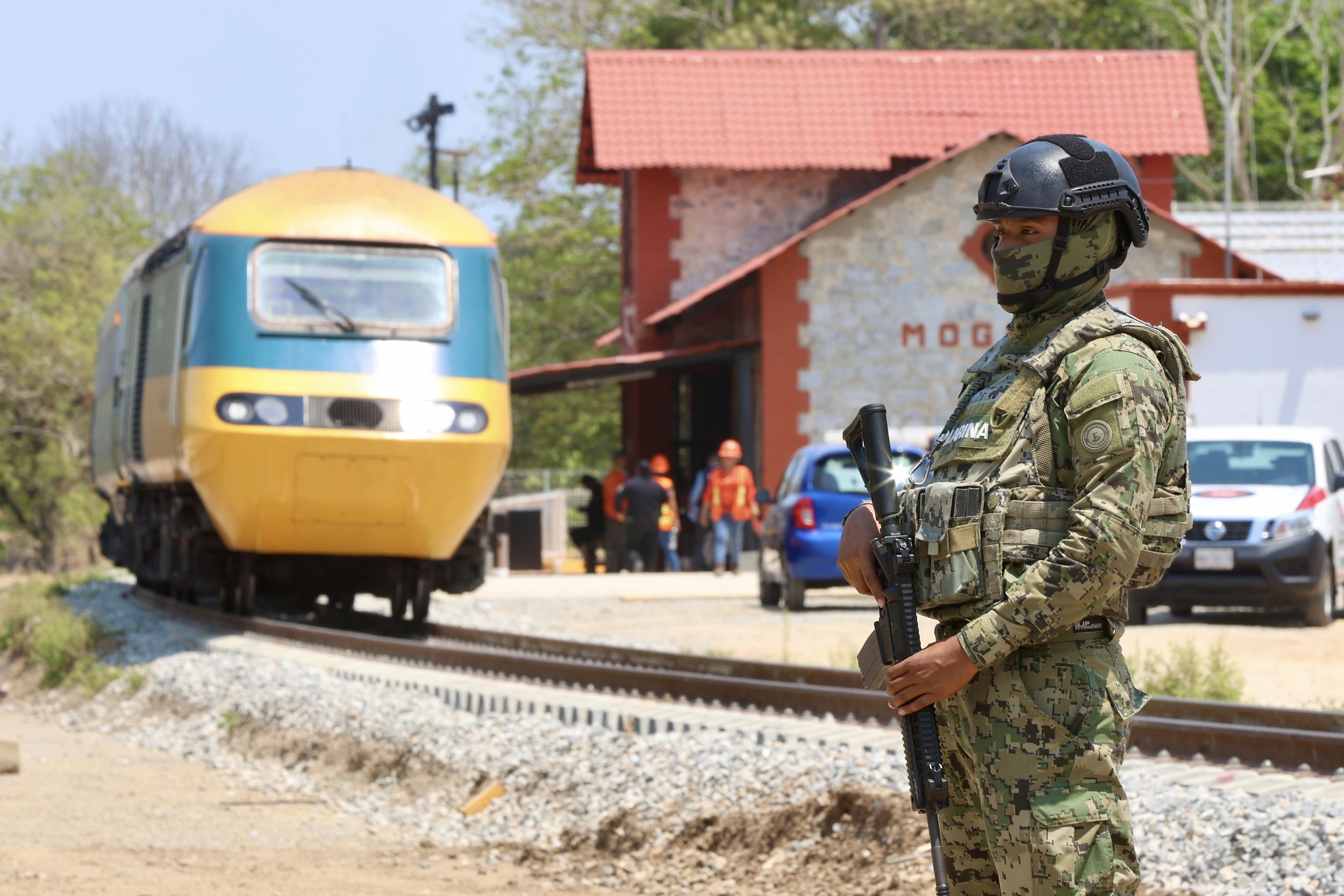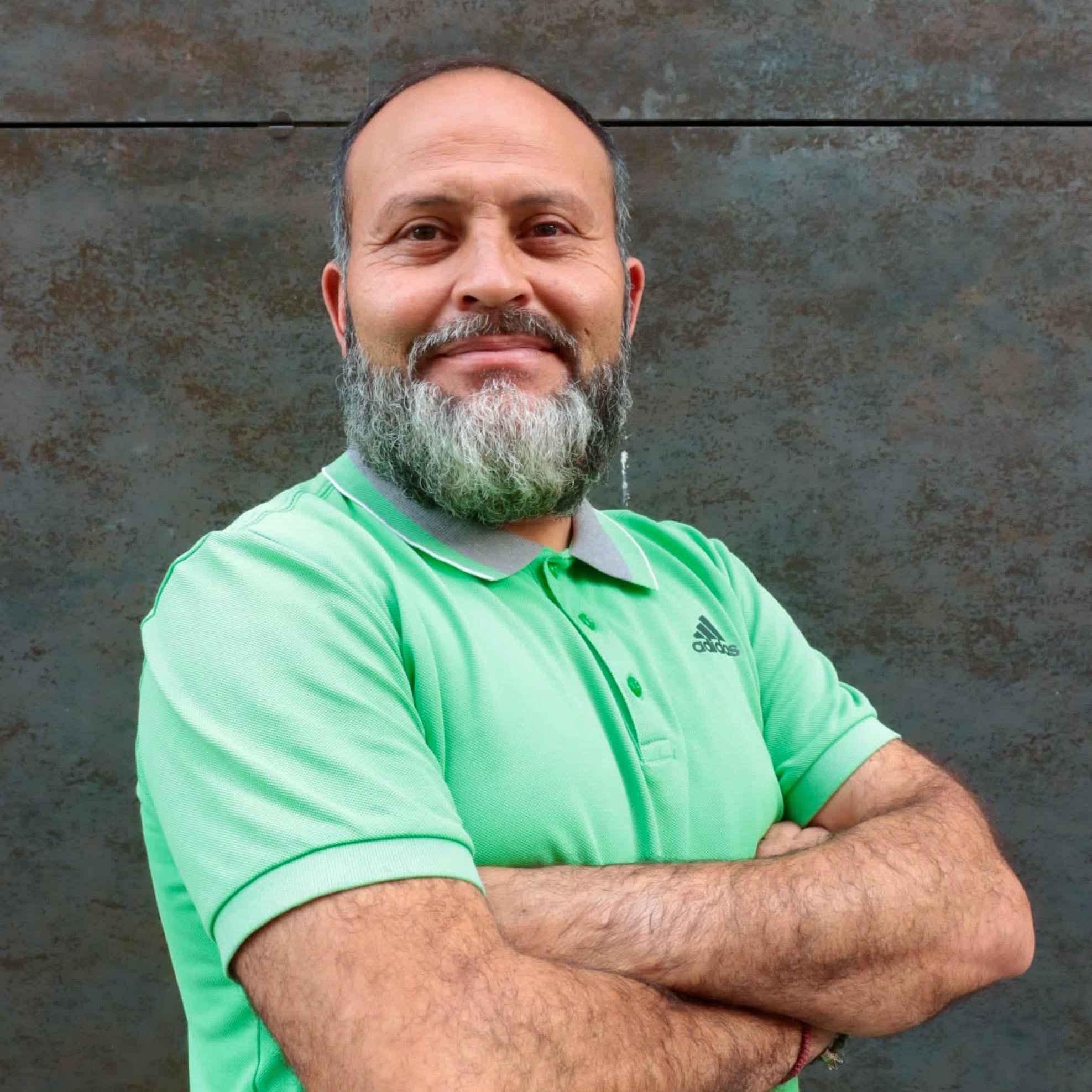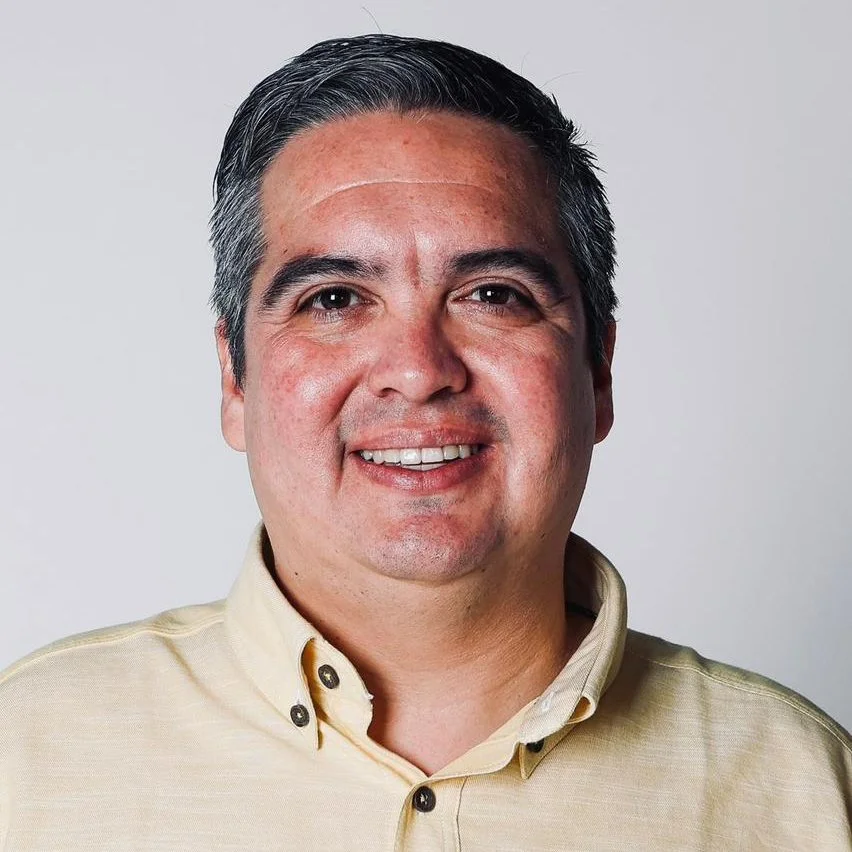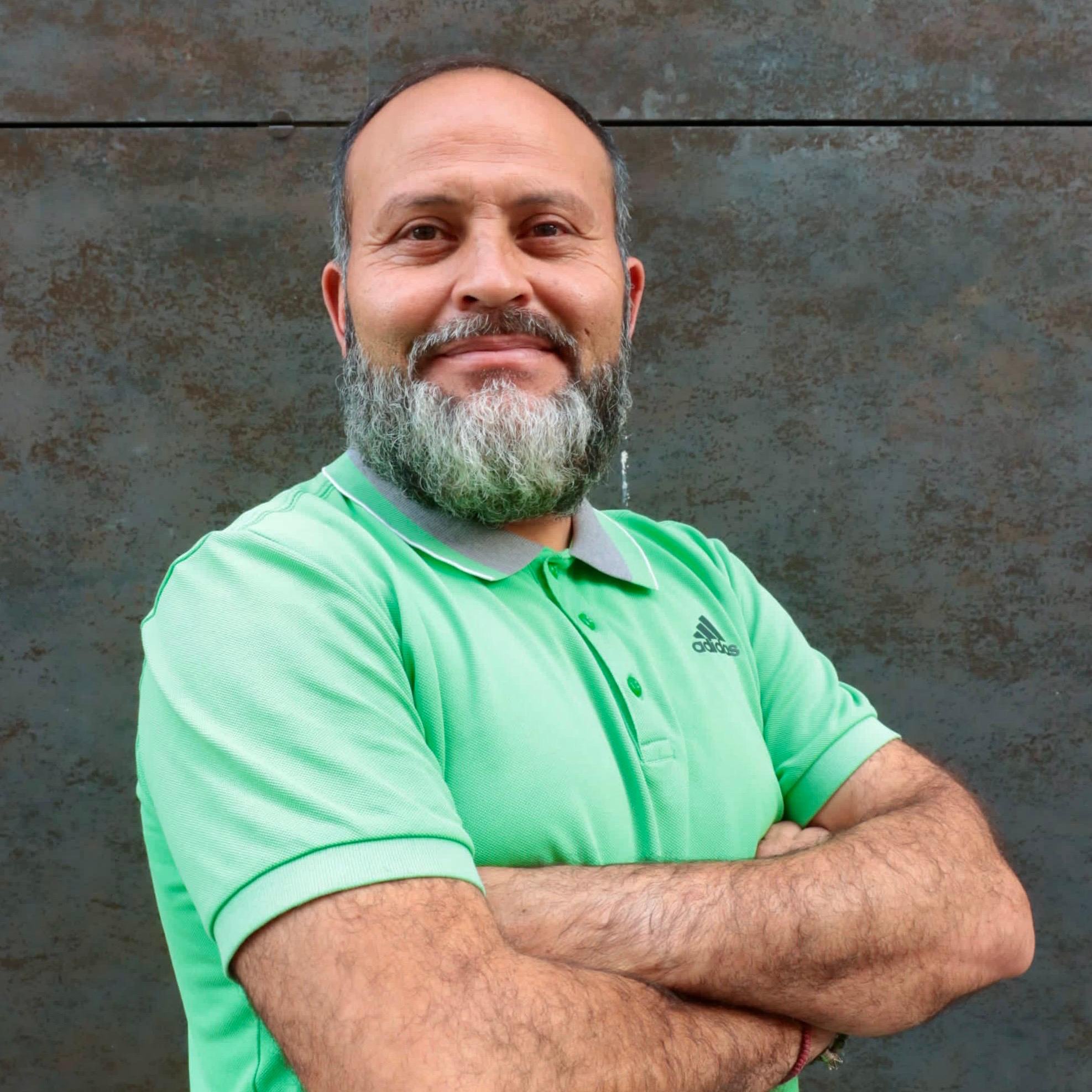Defending the land, the crime
The Mexican government has filed criminal charges against opponents of the Interoceanic Corridor. At least 61 people have open legal cases against them. “These are mechanisms of pressure,” argue activists and affected people.
Editor’s note: This investigation was originally published by El Universal and co-published in English by palabra.
Under the promise of bringing “development” to the states of Oaxaca and Veracruz, the Mexican government has plans to transform an area rich in natural resources into an industrial landscape with The Interoceanic Corridor of the Isthmus of Tehuantepec. Though federal officials claim otherwise, Indigenous people have been excluded from the project that is altering their territory and culture, accelerating land dispossession and driving an increase in violence.
Haz clic aquí para leer este reportaje en español.
On Tuesday, January 17, 2023, David Hernández Salazar noticed a white car with tinted windows parked outside his workplace in San Blas Atempa, Oaxaca, Mexico. Four armed men emerged from it. There were two possibilities, Hernández recalls thinking: the police or organized crime.
The former was more likely, since the only entity that had threatened his safety in recent months was the government. Hernández Salazar, an indigenous Zapotec man, was not alone; something similar happened to 17 other residents of Puente Madera in the municipality of San Blas Atempa, where he and others in the community resorted to legal appeals to halt the installation of one of 10 industrial parks called Development Sites (PODEBI, per its acronym in Spanish) that the administration of Mexican president Andrés Manuel López Obrador was planning for the Isthmus of Tehuantepec. The isthmus, which traverses Oaxaca and Veracruz, connects the Atlantic and Pacific Oceans. Essentially, the government sought to establish a Mexican alternative to the Panama Canal.
On that Tuesday, Hernández Salazar was arrested.
He and other indigenous Zapotec residents were charged by the Ministry of Infrastructure, Communications and Transportation (SICT), the National Agrarian Registry, and the municipal government for attempting to stop development in the 331 hectares within El Pitayal, a culturally significant area for this community due to its natural wealth.
Authorities charged community members and Hernández with damage to federal roads, theft, arson, and other crimes after repeated demonstrations against the PODEBI. Charges were filed with the Oaxaca State Attorney General's Office (FGEO) and the Federal Attorney General's Office (FGR). The charges stemmed from a road blockade in October 2022, when the community held a demonstration on the Transismic Highway to protest the construction of the industrial park on their land. In response to a banner in El Pitayal that read: “Property of the Interoceanic Corridor of the Isthmus of Tehuantepec,” some people burned government vehicles.
As though they were trying to make an example out of him, in 2024 Hernández — one of the most active voices in defense of this territory and a community representative for Puente Madera — was sentenced to 46 years and six months in prison, a fine of $9,300 and reparations for damages valued at more than $51,000. There were two options on the table for him and his associates: accept the construction of the industrial park and or go to prison.
David Hernández is the Municipal Agent of Puente Madera. He is the direct link between the town and the Municipality of San Blas Atempa, Oaxaca. He shows the legal protection filed by the community to defend El Pitayal. Photo by Valente Rosas/El Universal
Up to then, an appeal on grounds of unconstitutionality had delayed his imprisonment and allowed him to appeal his sentence. Although he had been at the road blockade, Hernández Salazar insists he did not participate in the arson. He denies all the crimes he was accused of.
“The government promised not to arrest my partners, or me, but there is a sentence and we cannot trust that there is no arrest warrant,” he says on a May afternoon in 2024, surrounded by mango trees on the porch of his house, in the most populous locality of San Blas Atempa, where almost all residents are Indigenous. “The government knows the position Puente Madera is in, but we also know the government’s position.”
The criminalization of Hernández Salazar and others is the Mexican government’s strategy for subduing opposition to the Interoceanic Corridor projects, as Unión de Comunidades Indígenas de la Zona Norte del Istmo (Ucizoni) has decried. Those affected are isthmus inhabitants who have been victims of some type of violation as part of the implementation of the megaproject. Consultations that misled Indigenous peoples, forged signatures that endorse the sale of ejidos (group farms), and lack of information on the environmental consequences are a few examples.
As part of this investigation, El Universal identified 61 individuals that have had one or more criminal proceedings brought against them by state or federal authorities in connection with the Interoceanic Corridor project. The names of 59 individuals came from data provided by civil society organizations. Two additional cases were identified thanks to reports that appeared in the press. Using the data from civil societies, we determined that 42 of the accused are men and 14 are women. The genders of five other accused persons could not be determined. Ninety-seven percent of the accused are indigenous Binnizá, Ayuuk, or Zoques.
“There is an escalation (of criminalization). It includes people who not fit the profile of a criminal, including peasants, women, and housewives who are being criminalized and intimidated through legal mechanisms,” says Loni Hensler, co-coordinator of Terravida, a non-governmental organization that offers accompaniment in processes of defense of nature and territory. She also believes that “the Interoceanic Corridor has not received much attention, like the Mayan Train (a new rail line that offers tourist and industrial cargo trips through the jungles of southeast Mexico), neither on its development process nor on the resistance and criminalization.”
Militarization as a bargaining chip
The Interoceanic Corridor is a priority project for the Mexican government. Former President Andrés Manuel López Obrador classified it as a national security project and handed over its operation to the navy. Photo by Valente Rosas/El Universal
The Interoceanic Corridor of the Isthmus of Tehuantepec (CIIT) was first planned during the Porfiriato regime (an era of dictatorial rule by president Porfirio Díaz that lasted from 1876 to 1911). Previous administrations also proposed it under different names. Some of these proposals were headed by the PRI, the Mexican political party that ruled the country for more than 70 years. But the plan was finally executed during the administration of former President Andrés Manuel López Obrador, from 2019 to 2024.
Originally, the navy did not have any participation in the project. Civilian government employees were in charge of the Corridor. This was established by the decree of June 14, 2019, which was published by the president to form a decentralized public body with its own legal identity and assets and named the Interoceanic Corridor of the Isthmus of Tehuantepec.
This agency is in charge of implementing the Corridor that integrates the ports of Salina Cruz, Coatzacoalcos and Veracruz with the railroad line and executing any future action to contribute to the “development of the Isthmus of Tehuantepec region.”
However, step by step, the navy began to interfere. In addition to receiving public works contracts, in 2021 the navy deployed the first 831 troops to perform security work in the Corridor. This was the first indication that the project was being militarized.
Then, by decree, the navy was assigned the port administration of Salina Cruz and Coatzacoalcos. By March 11, 2022, López Obrador announced during his morning conference that the navy would be in charge of the megaproject.
What followed was a formality. The Navy’s presence in the isthmus increased. Navy Vice Admiral Raymundo Pedro Morales Ángeles was named director of the CIIT and, after this appointment, the Navy's authority was institutionalized a couple of months later. Morales Ángeles is currently the Secretary of the Navy, appointed by Mexico’s current president, Claudia Sheinbaum. The most recent numbers, obtained through public records requests, show 2,560 marines assigned to the Corridor’s impact zones.
Although the naval agency dominates the project, the participation of the National Guard and the Army continues to undermine the lives of the inhabitants of the Isthmus. The latter agency is said to have 10,721 soldiers deployed in Oaxaca and Veracruz, without specifying their role in the CIIT.
“The number of elements is worrisome. Their presence has caused a hostile climate for the communities, a lot of insecurity, and a lot of concern, even for demonstrating. This limits other rights of the communities and peoples,” says Hensler, who participated in the Civil Observation Mission in 2023, in which 22 civil society organizations worked together to document and bring to light troubling aggression related to the project.
In response to questions from El Universal, the CIIT said that the Navy took command of this organization because the Isthmus of Tehuantepec is a strategic region for the country, “which has turned the Corridor into a national security issue that requires permanent follow-up and continuity; its mission is long-term.”
Establishing the Corridor as “national security” hinders access to information on the implications of the project and increases the risk of criminalization against the inhabitants of the Isthmus. Photo by Valente Rosas/El Universal
“They leave us bound hand and foot.”
Juana Inés Ramírez, a native of San Juan Guichicovi municipality, Oaxaca, was at her grandmother's wake early on the morning of April 28, 2023. At the same time, in a town of the same municipality, Mogoñé Viejo, state police, members of the National Guard and the Navy violently evicted the peaceful encampment “Tierra y Libertad,” which had been set up by a group of Mixe inhabitants affected by the rehabilitation of the Interoceanic Railway. Four women and two men were detained during the eviction.
Community organizing has become the mechanism for resisting criminalization in the Isthmus. However, for territorial defenders it implies the risk of losing their freedom. Photo by Valente Rosas/El Universal
Inés Ramírez, environmental defender and member of the organization Unión de Comunidades Indígenas de la Zona Norte del Istmo (Ucizoni), had been accompanying this group of affected individuals. Although she was not at the encampment that night, she was charged with crimes along with two other members of the association.
“They criminalize us, denounce us criminally, and leave us tied hand and foot. How can we defend our partners if there is stigmatization on the part of the authorities?” she says from the garden of the Ucizoni, in the Matías Romero municipality, Oaxaca.
During meetings of the State Coordination for the Construction of Peace in Oaxaca, established by the Mexican government to address security concerns in the region, social demonstrations around the project in the isthmus area have been reported. In 2019, authorities such as former Oaxaca governor Alejandro Ismael Murat Hinojosa, and the National Guard, the Secretary of National Defense (SEDENA), and the Interior Ministry usually participated in these regional events.
The minutes of those meetings suggest the use of legal mechanisms against the detractors of the megaproject as an institutional strategy. For instance, in a document dated September 6, 2019, Carlos Santiago Carrasco, representative of the Interior Ministry, revealed that the Federal Attorney General’s office (FGR) had already opened investigation files against individuals who, a few days prior, had blocked the Z line of the Interoceanic railroad in Matías Romero and Ciudad Ixtepec, Oaxaca.
“It was agreed that legal proceedings will be taken against those who are blocking,” Carrasco said, according to minutes recorded in the army's e-mails and leaked by Guacamaya, a group of hackers that disseminated e-mails of the Mexican army to the press in 2022.
The Mexican government has documented protests against the Corridor in Oaxaca since 2019. Also since then, legal mechanisms have been implemented against those dissatisfied with the megaproject.
El Universal obtained evidence — using public records requests — showing that FGR said that between 2019 and April 2024 it opened 968 investigation files against civilians in Oaxaca and Veracruz in which the complainants are federal institutions with some responsibility within the megaproject.
For these files, FGR was asked to detail the complaints filed by the Ministry of the Navy, the Interoceanic Corridor of the Isthmus of Tehuantepec (CIIT), the Isthmus of Tehuantepec Railroad (FIT), the Ministry of Infrastructure, Communications and Transportation (SICT) and the Ministry of the Interior (SEGOB), as well as the complaints filed by these authorities together with the National Guard (GN) and the Ministry of National Defense (SEDENA).
The information gathered does not allow us to determine the municipality where the alleged crime was committed or the direct link to the megaproject. However, the data shows an increase in the number of complaints filed by the Mexican State in these areas where works are being carried out for the “development of the Isthmus of Tehuantepec,” from highways and rehabilitation of trains to the occupation of land for industrial parks. In 2019 there were only 33 open investigation files, but by 2022 that figure rose to 452.
Most of the complaints (865) were for attacks on general communication routes and other crimes included in the federal firearms and explosives law. In addition, there are files for damage to others' property, exploitation of property belonging to the nation, theft, and opposition to the execution of public works.
The charges for federal crimes can have minimum sentences of three months to two years in prison. These sentences can be imposed if someone is accused of opposition to the execution of a public work project. Crimes that include hindering communication routes can result in up to 20 years and fines that can exceed approximately $100,000 USD at the current exchange rate, according to Mexico’s federal criminal code.
In response to the request for comment, the Ministry of Infrastructure, Communications and Transportation (SICT) said it has “the power and obligation to denounce any person blocking railroads, concessioned or federal highways, (and) airports because these actions constitute a federal crime.”
The Interoceanic Corridor of the Isthmus of Tehuantepec, through its press office, said that “the magnitude of the work finds fertile ground for some opposition groups” and that they have sought to resolve conflicts through dialogue, but that “unfortunately as authorities, we are not listened to, circumstances that because of the systematic and persistent violence and insults, oblige us to file complaints before the competent authorities as a last option”.
The request for an interview was made through the Ministry of the Navy, which has also filed criminal complaints against civilians in the last six years. “When the rights of the Corridor are affected, this organism, being an entity with its legal personality and patrimony, acts within the scope of its responsibilities, excluding the Secretary of the Navy from any situation,” the CIIT statement said.
Responses provided by the Interoceanic Corridor of the Isthmus of Tehuantepec on September 23, 2024, in response to questions submitted for these investigations.
A comment from each of the mentioned agencies was requested, but at press time they had not provided any information.
At the state level, the Oaxaca Prosecutor's Office has received 29 complaints for theft, damage, fraud, robbery, and attacks on the roads operated by these federal agencies. In the cases documented for this investigation, these files are the ones that have represented the greatest risk for the inhabitants of the isthmus because arrest warrants and sentences have been issued for them.
Government: perpetrator of violence
The militarization of the project brings intimidation and restricts the right of communities to protest and reject a project that will affect their lives and territory. Photo by Valente Rosas/El Universal
The criminal complaints have had an impact on communities, especially those filed with the state prosecutor's office. In the early morning of January 27, 2024, for example, state and military authorities detained two women and seven Binniza (Zapotec) men from Santa María Mixtequilla, Oaxaca who also rejected the Podebi proposed for their territory.
Santa María Mixtequilla’s government — headed by the Juan Carlos García Salud from the Morena political party — accused the detained of the alleged theft of a municipal police patrol car, damage by fire, and robbery.
Support the voices of independent journalists. |
All of those arrested went to jail first and were ordered to stand trial after an operation coordinated with the State Investigation Agency, the National Guard, the military, and the state police. This group was released on the condition that they abandon the defense of their territory. An interview was sought with them, but they refused to talk for fear that the government would imprison them again.
During the Civil Observation Mission in 2023, several civil society organizations traveled to the isthmus to identify the problems caused by the implementation of the Interoceanic Corridor. They observed criminalization as one of the mechanisms of violence exercised against local residents. In addition to criminal complaints, these organizations issued a report that exposed cases of dispossession, intimidation, harassment, threats, and physical aggression against individuals, families, and communities that were defending their lands, their right to a healthy environment, and the right to self-determination and exercise of their collective rights as Indigenous peoples.
Juana Ines Ramirez advocates for the “progress” promised by the government to be inclusive of indigenous communities. Video by Diego Prado/El Universal
Regarding the “agents perpetrating violence,” the civil society groups argued that most are officials representing the Mexican State: the Ministry of the Navy, the National Guard, the Attorney General's Office of the State of Oaxaca, the State Police, the Attorney General's Office, the Attorney General's Office, the Municipal Government. In the report, the organizations emphasize that the “serious situation of systematic and generalized violence” has increased since the development of the CIIT megaproject and that it is accentuated by the presence of the armed forces.
These effects of criminalization are palpable in the cases of David Hernández Salazar and the San Blas Atempa residents. They had been fighting for years until government pressure prevailed.
Sitting on the porch of his house on a May afternoon in 2024, he put his hands side by side in a sign of balance, a forced balance that puts them in a stalemate.
“The government is thinking about it and we are thinking about it too, because right now we have arrest warrants and an injunction, but what do we want? Another 10 investigation files for more serious crimes? Or to reach people who lose their lives? As I tell the ‘compas’: ‘for the peace and tranquility of Puente Madera, we are going to look for a path,’” says Hernández Salazar.
On June 17, 2024, after three years of resistance, the community retired legal mechanisms that they had relied on to stop the construction of the industrial park. This was the final path to obtaining their full freedom. In exchange, the residents of Puente Madera obtained the revocation of the sentence and acquittal of Hernández Salazar, as well as the cancellation of the criminal action against the other 17 accused.
—
Alejandra Crail is an investigative journalist based in Mexico, Alejandra Crail has specialized her journalistic approach in corruption, human rights, children's issues, and gender. She has collaborated with several Mexican media outlets such as Emeequis, Gatopardo, and Grupo Expansión. Currently, she is a member of the Investigative and Data Journalistic Unit of El Universal. Her work has been recognized with the Walter Reuter German Journalism Prize (PAPWR) (2018 and 2021), the Breach-Valdez Prize for Journalism and Human Rights (2020 and 2024), and the King of Spain International Journalism Award in 2024. @AleCrail
Valente Rosas holds a degree in Journalism and Collective Communication from FES Acatlán UNAM (1996-2000). He began his photojournalistic career in 2002, in the area of Social Communication of Mexico City's Public Security Secretariat. Since 2005 he has been a photojournalist for the newspaper El Universal, where he reports on drug trafficking, environment, security, and natural disasters. He won the GDA Journalism Award in the category of Environmental Journalism for a report on the Mayan Train.
Diego Prado is an audiovisual producer from the National Autonomous University of Mexico. He has worked as a journalist for 10 years, the last seven at the Mexican daily El Universal. Prados' interests include migration, social and cultural manifestations of diverse communities such as the implication of the development of the Tren Maya in the Yucatan Peninsula, the effects of Hurricane Otis in the port of Acapulco, and the coverage of patron saint festivals in different states of the country.
Silber Meza is an investigative journalist specialized in security, human rights, and corruption. Winner of the National Journalism Award, Walter Reuter German Journalism Prize (PAPWR), and SIP Award, among others. He has taught several courses on investigative journalism. He is a co-author of a couple of books. He is currently the coordinator of the Investigative and Data Journalistic Unit of El Universal. @silbermeza

This investigation was made possible thanks to the dedicated team at El Universal:Project research and coordination: Alejandra Crail Editing: Silber Meza Photography: Valente Rosas Video: Diego Prado Design and web development: Omar T. Bobadilla Data analysis and visualization: Irving Morales Field support: Antonio Mundaca, El Universal Oaxaca English adaptation: Susan Ferriss |




















